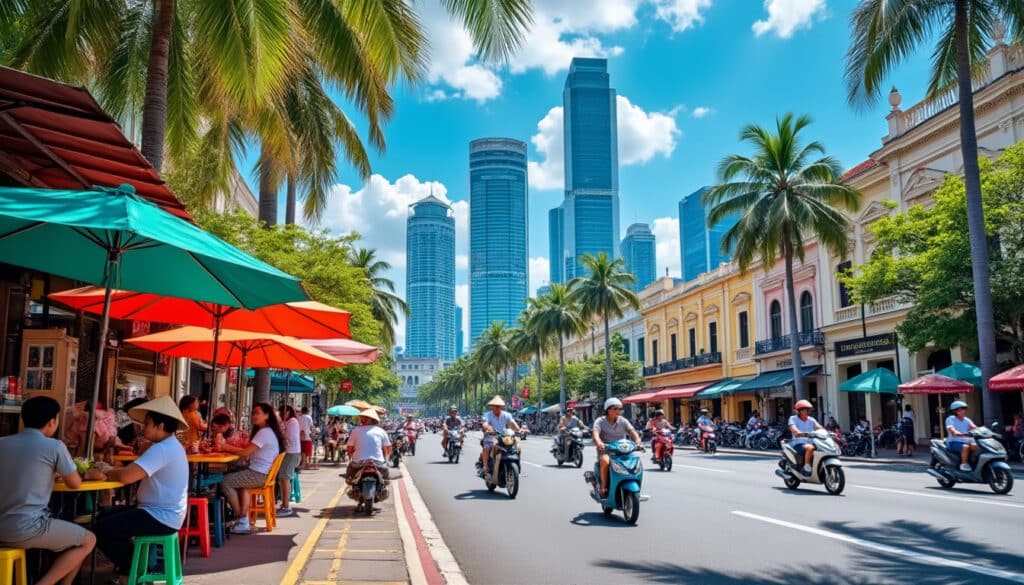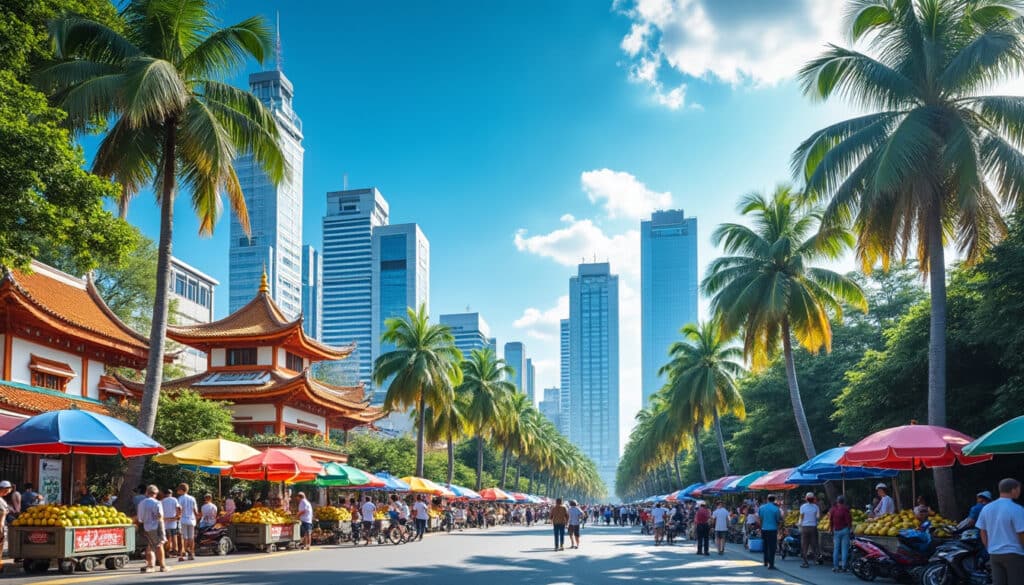Ho Chi Minh City, known for its bustling streets, rich history, and vibrant culture, is one of Vietnam’s most dynamic urban centers. With its fascinating blend of the past and present, the city attracts millions of visitors each year. However, one question perplexes many: does it snow in Ho Chi Minh City? The answer is rooted in Vietnam’s diverse climate, split between tropical and temperate zones. While the idea of snow in this southern metropolis might seem far-fetched, a deeper look at Vietnam’s weather patterns reveals why some regions experience snow and others don’t. Let’s delve into the climatic conditions and geography of Ho Chi Minh City to understand if snow is a possibility.
Understanding Ho Chi Minh City’s Tropical Climate
Ho Chi Minh City, previously known as Saigon, is the largest city in Vietnam and is situated in the southern part of the country. Positioned at approximately 11 degrees north of the equator, the city enjoys a tropical climate characterized by two primary seasons: wet and dry. The temperature ranges from 25 to 35°C (77 to 95°F) all year, ensuring that the weather remains warm and humid.
The wet season stretches from May to November, influenced by the Southeast Asian monsoon winds, while the dry season runs from December to April. During both seasons, the weather remains relatively consistent, with only minor fluctuations in temperature. The high humidity, especially during the rainy season, contributes to the warm atmosphere that persists throughout the year.
| Season | Months | Temperature Range (°C) |
|---|---|---|
| Wet Season | May – November | 25 – 35 |
| Dry Season | December – April | 25 – 35 |
- 🌧️ Ho Chi Minh experiences nearly constant warmth.
- 🌦️ Two main seasons: wet and dry.
- 🔥 No drastic drops in temperature like temperate regions.
Essentially, the tropical climate of Ho Chi Minh contributes to its vibrant environment but precludes the possibility of snow. The city’s geographical location ensures that it remains warm, even when northern regions like Hanoi experience cooler temperatures. Ho Chi Minh’s consistent warmth and humidity create a distinctive atmosphere that is vastly different from those in regions where snowfall occurs.
The Unlikelihood of Snow in Tropical Climates
The mechanics behind snow formation in certain regions are largely dependent on a combination of geographical elements: altitude, latitude, and the presence of cold weather fronts. In locations like Ho Chi Minh, these factors align in such a way as to prevent snowfall.
Snow forms when temperatures drop below freezing and there’s sufficient moisture in the air. In temperate or continental climates, these conditions can be met during cold seasons. However, tropical climates, defined by high temperatures and humidity, do not provide the freezing conditions necessary for snow. Even during the driest months, the temperature rarely, if ever, falls below 20°C (68°F). Thus, the concept of snow in Ho Chi Minh remains fanciful, conjuring images of a white Christmas in the tropics—a scenario that’s charming but practically impossible.
Yet, despite the absence of snow, Ho Chi Minh City’s climate offers its own distinct allure. The warm temperatures and occasional downpours shape a cityscape that buzzes with energy. Visitors can comfortably explore the city’s outdoor attractions year-round, from the historic sites of District 1 to the lively alleys of District 5. The weather’s predictability often makes it easier for travelers to plan their itineraries without worrying about disruptions caused by seasonal changes.
Why Snow Falls in Some Parts of Vietnam
Vietnam’s diverse topography results in a wide range of climates, from the humid Mekong Delta to the cool highlands. In contrast to the tropical atmosphere of Ho Chi Minh City, several northern areas of Vietnam do experience snow. Known for its stunning landscapes and ethnic diversity, the north provides a more varied temperature range due to its differing altitude and latitude.
In regions like Sapa and Fansipan Mountain, situated over 1,500 meters above sea level, the temperatures are significantly lower, particularly from December to February. The cold spells that sweep through these high-altitude areas allow for the possibility of snow, creating a winter wonderland for travelers and locals alike. These areas, though distant from Ho Chi Minh, attract visitors who seek a taste of Vietnam’s winter chill.
- ❄️ Sapa: Renowned for its terraced rice fields and eco-tourism.
- 🏔️ Fansipan: Known as the “Roof of Indochina” with snowfall peaks.
- 🗻 Mau Son and Dong Van: Lesser-known but equally picturesque snow destinations.
SnowyDays in these northern locations not only offer picturesque landscapes but also present unique cultural experiences, as many of the local ethnic communities celebrate with traditional attire and customs during the winter months. The distinct FrostyFashion and ColdWeatherApparel found here include vibrant garments that help adapt to the chilly environment.
Seasonal Trends: Snow and Tourism
The presence of snow in northern Vietnam has also influenced tourism trends. Visitors flock to areas like Sapa and Fansipan, not only for the chance to encounter snow but to indulge in cultural immersion without braving the harsh winters of the Western world. These destinations provide a unique blend of natural beauty and cultural richness, making them appealing in the context of Vietnam’s broader travel landscape.
For those intrigued by Vietnam’s winter offerings, planning a trip can center around experiencing cultural events while enjoying the natural splendor. Resort towns in the north have adapted by offering Wintergear and ThermalOutfitters to tourists seeking both adventure and comfort. These preparations ensure that even places with unpredictable weather remain WarmHaven for every traveler.
Exploring Ho Chi Minh’s Unique Appeal
While snow is absent from Ho Chi Minh, the city offers a myriad of attractions and experiences that capitalize on its tropical setting. Travelers are drawn to its dynamic street life, rich history, and culinary delights. Whether indulging in world-renowned Vietnamese coffee culture or exploring the extensive network of tunnels that tell the tale of war history, Ho Chi Minh is a city of discovery where warm weather aligns with a warm welcome.
The absence of snow means that Ho Chi Minh is perfect for those unaccustomed to cold climates, providing endless opportunities to explore without the need for bulky winter wear. The city’s aesthetic, with its colonial architecture and bustling markets, makes for an inviting urban environment year-round.
| Attraction | Description | Optimal Visiting Season |
|---|---|---|
| Cu Chi Tunnels | An intricate underground network from the Vietnam War | Dry Season |
| Ben Thanh Market | A vibrant market offering local goods and food | Year-Round |
| Notre-Dame Basilica | Iconic French colonial-era cathedral | Dry Season |
In Ho Chi Minh City, there’s never a dull moment. With a blend of historic charm and modern vibrancy, the city remains a hotspot for international tourists regardless of the season. Whether it’s exploring its artistic neighborhoods or indulging in its bustling nightlife, the city captures the essence of tropical liveliness.
Ho Chi Minh Weather Information
Cultural and Social Vibrance Without the Winter Chill
Beyond the reliable warmth, the cultural vibrancy of Ho Chi Minh City cannot be overstated. From traditional Vietnamese performances at the Opera House to contemporary art exhibits, the city’s cultural tapestry is woven with myriad colors. The social scene is equally lively, with events ranging from international music concerts to local craft fairs.
The city’s cultural offerings invite visitors to engage with a rich history and a dynamic present. Whether participating in a traditional tea ceremony or attending a cutting-edge film festival, the city’s atmosphere embraces diversity and creativity, embodying a SeasonalTrend all its own—where cultural warmth substitutes climatic warmth in providing comfort and joy.
Vietnam’s Winter Charm: A FAQ Guide
Understanding the climate dynamics and cultural richness of Vietnam can spark curiosity and lead to questions about this intriguing country. Addressing some frequently asked questions can clarify misconceptions and provide a clearer picture of what to expect when visiting.
- ❓ Does it snow in Ho Chi Minh City?
No, the tropical climate ensures warm temperatures all year round, making snow impossible.
- ❓ Where can I see snow in Vietnam?
Snow is possible in northern regions like Sapa, Fansipan, and Mau Son during winter months.
- ❓ What should I wear in northern Vietnam during winter?
Prepare with ChillyStyle essentials and layers to accommodate fluctuating temperatures.
- ❓ When is the best time to visit southern Vietnam?
The dry season (December to April) is optimal for travel, offering manageable weather for exploration.
- ❓ How does the weather impact tourism in Vietnam?
The variety of climates enables year-round tourism, with each season offering distinct experiences.
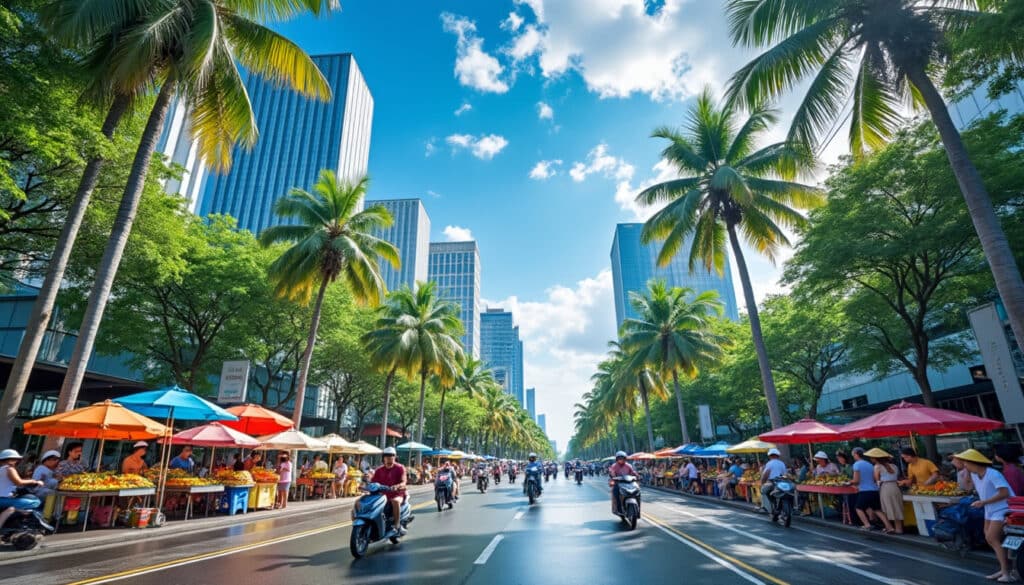
Climate & Weather in Ho Chi Minh
Ho Chi Minh City is a vibrant metropolis known for its dynamic culture, bustling streets, and a climate that plays a significant role in shaping the everyday lives of its residents and visitors. With its tropical monsoon climate, Ho Chi…
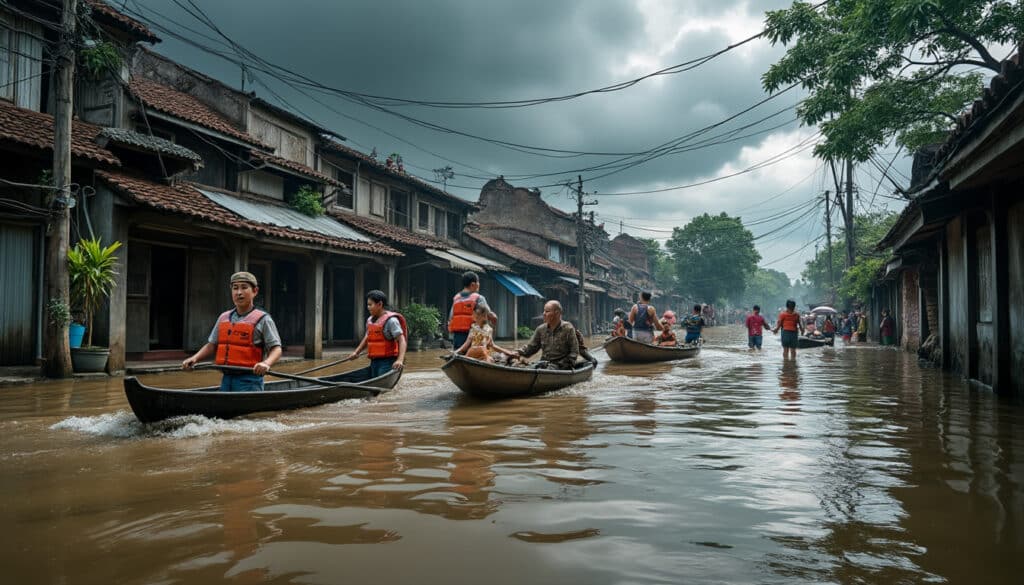
Flooding and natural risks in Ho Chi Minh
Ho Chi Minh City, the bustling metropolis of Vietnam, is a vibrant hub of culture, commerce, and historical significance. Yet beneath its thriving exterior lies a pressing challenge: the persistent threat of flooding and natural risks. As the city develops…
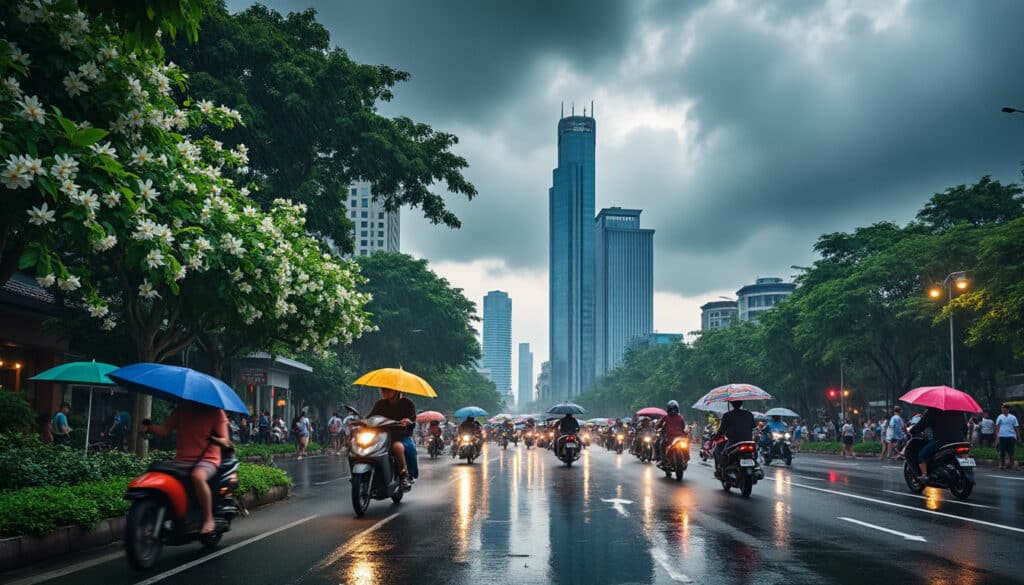
Ho Chi Minh City, Vietnam’s bustling metropolis, is a fascinating blend of modernity and tradition while presenting unique climate characteristics. With a tropical climate, Ho Chi Minh experiences humidity levels that play a crucial role in shaping the city’s weather.…
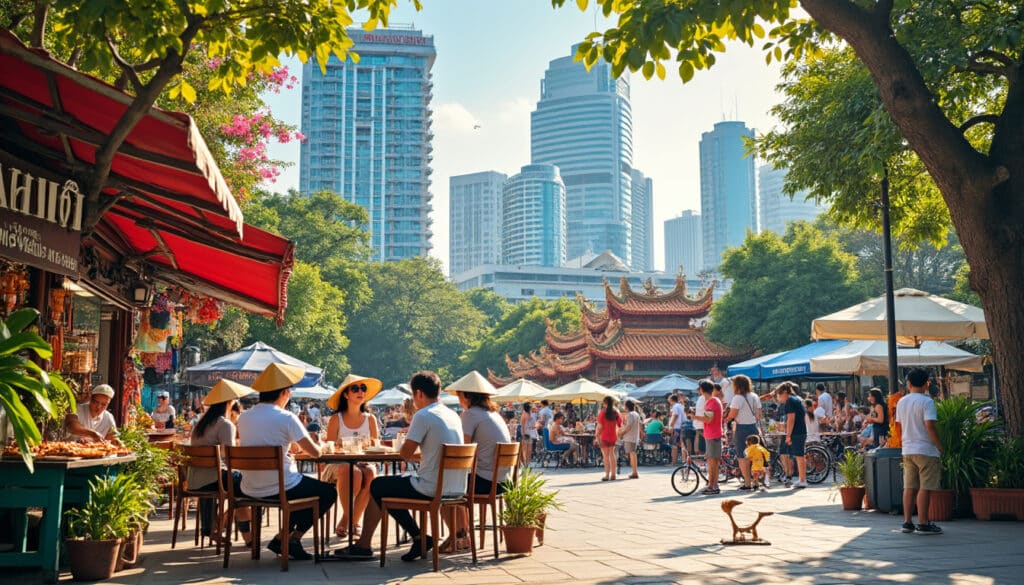
Is Ho Chi Minh warm throughout the year?
🌞 In the bustling streets of Ho Chi Minh City, warmth is more than just a temperature—it’s a defining characteristic 🌡️. With its tropical monsoon climate, this Vietnamese metropolis, formerly known as Saigon, boasts a landscape where the sun and…
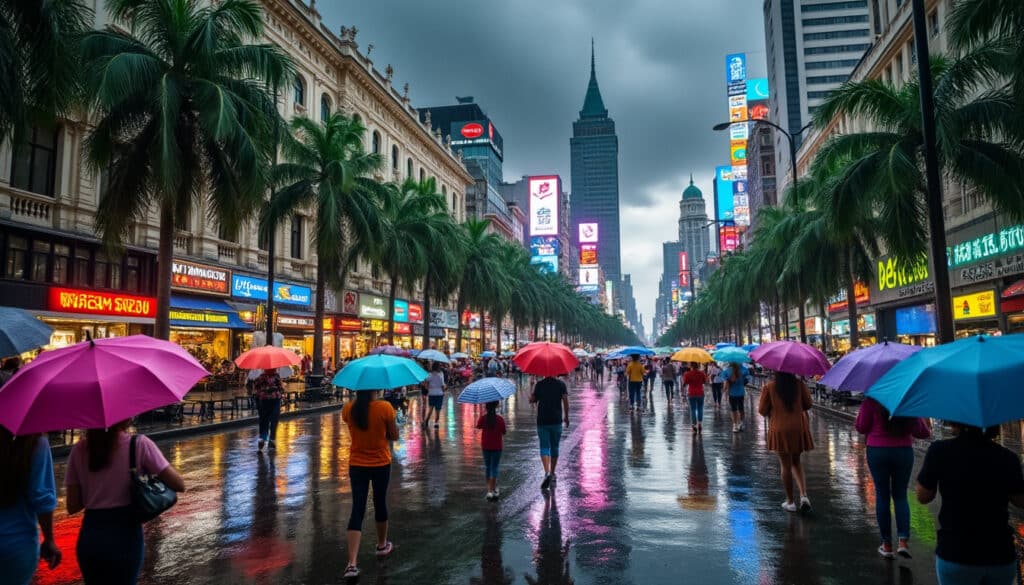
Rain and precipitation in Ho Chi Minh
Rainfall in Ho Chi Minh City, the bustling urban heart of Vietnam, plays a crucial role in shaping its unique character. The city, with its sprawling districts and rich historical backdrop, is no stranger to the whims of tropical weather.…

The vibrant city of Ho Chi Minh, also known as Saigon, is a captivating blend of bustling street life and rich cultural history. Understanding the seasonal dynamics of this metropolis is essential for travelers aiming to make the most of…
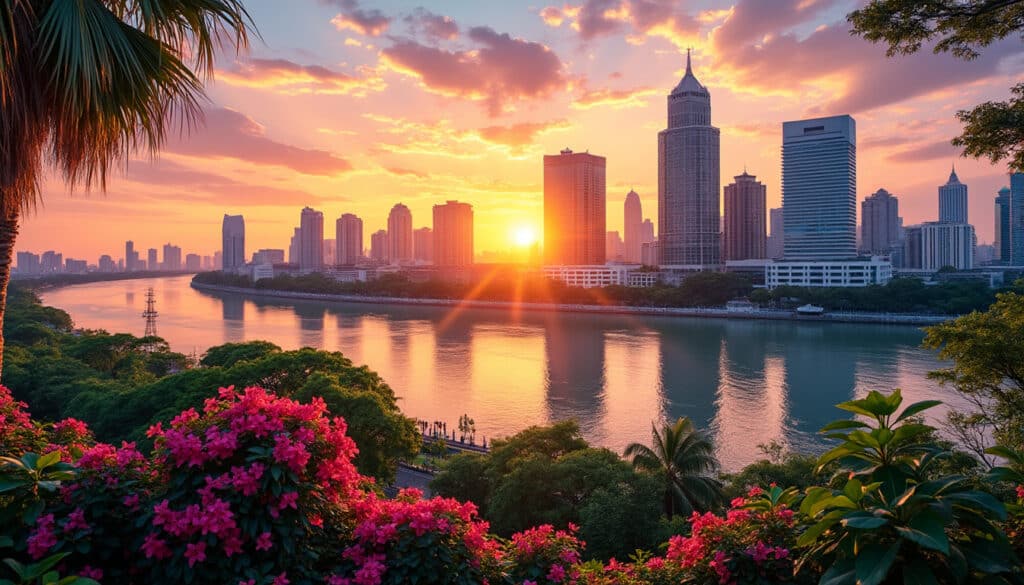
As dawn breaks over the bustling city of Ho Chi Minh, the event signals a new beginning for this vibrant metropolis. Nestled in Vietnam, this city, filled with colonial history and modern skyscrapers, experiences unique sunrise and sunset patterns that…
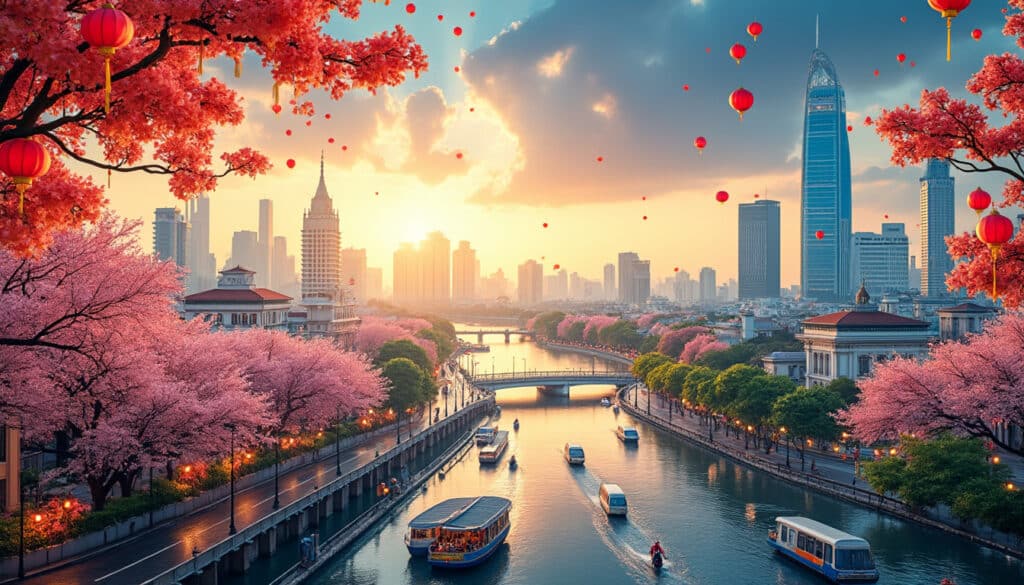
Weather in Ho Chi Minh by month
Exploring the vibrant streets and immersive culture of Ho Chi Minh City offers adventure and excitement every month. Understanding its unique climate patterns can help visitors make the most of their time in this dynamic urban landscape. Ho Chi Minh…
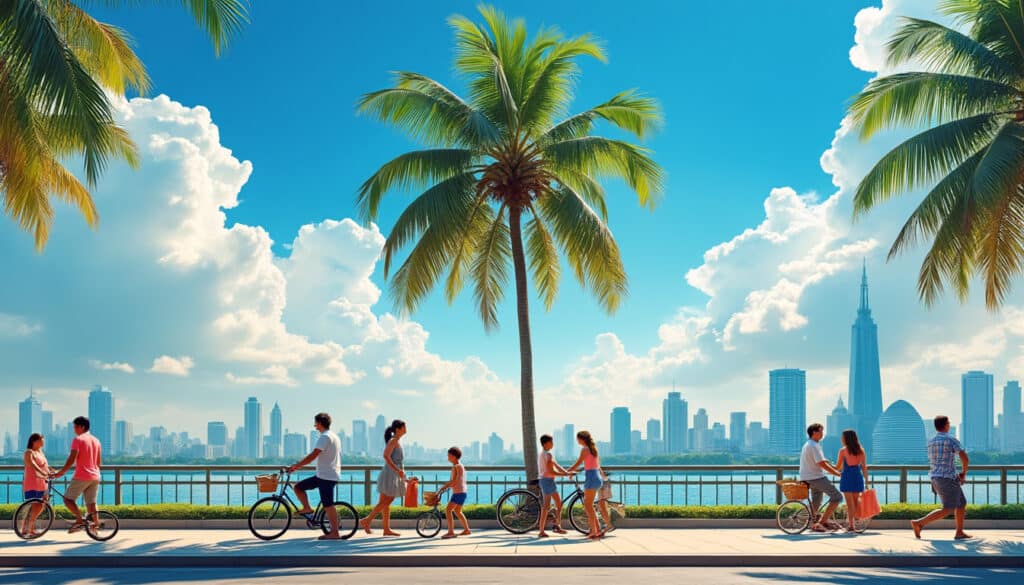
What is the weather like in Ho Chi Minh?
Understanding the weather in Ho Chi Minh City is crucial for both residents and visitors. This bustling metropolis in Vietnam is known for its distinctive tropical climate, which influences daily life, activities, and even cultural events. What’s fascinating about Ho…
Ho Chi Minh City, also known as Saigon, is well-known for its vibrant street life, rich history, and delectable phở. But how often do we hear about cold weather in this bustling metropolis? Unusually, the mention of “cold” and “Ho…

